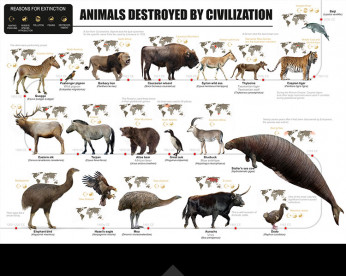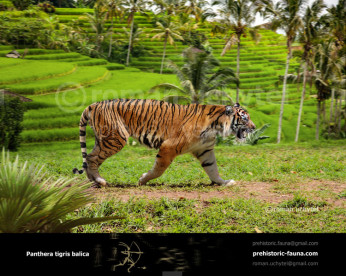Caspian tiger (Panthera tigris virgata)
214214Turanian tiger, Caspian tiger (Panthera tigris virgata Illiger, 1815)
Class: Carnivores (Carnivora)
Order: Carnivora
Family: Felidae
Expansion: Late Pleistocene - our time in Central Asia (extinct 50 years ago)
Dimensions: length - 2 m, tail length - 100 cm, height - 95-110 cm, weight - 150 - 240 kg.
Caspian tiger or Turanian tiger - extinct subspecies of tigers in Central Asia, the Caucasus and northern Iran. This cat has/differs a rather large size and bright chestnut coat color, with long stretches of brownish. Winter fur became thicker and longer on the underbelly and whiskers became more lush. Reliably known maximum mass Caspian tiger is 240 kg, making it one of the largest subspecies. This predator lived in reed or cane brushwoods along rivers, which are called riparian forests in the Central Asia. Caspian tiger fed gazelles, saiga, kulans, roe deer and wild boar. According to some reports, in the pursuit of migratory wild boars Caspian tiger reached the Eastern Kazakhstan and Altai. In the north, the upper boundary of the permanent habitat of this Tiger was Lake Balkhash in Kazakhstan. In the past, probably this Tiger also met in the Caucasus, but it has long been destroyed there. Caspian tiger was also distributed in the humid subtropical forests of northern Iran and in the river valleys in Afghanistan. Their rookeries Caspian tigers staged in the reeds, necessarily not far from water sources, and were able to go for a twenty-four hours to a hundred kilometers. In the thirties of the XX century tigers lived on the banks of the Amudarya in the reserve "Tiger gully" on the territory of Tajikistan, near the border with Afghanistan. Last documented sightings of tigers in the territory of Soviet Central Asia were recorded/locked in in the late forties - early 1950s. Last action tiger on Soviet territory dated 10 January 1954 (the border with Iran - Kopetdag, Turkmenistan). It is believed that the tiger had come there from northern Iran. According to the molecular-genetic data, Caspian tiger or Turanian tiger is almost identical to the Amur tiger.
Turanian tiger, Caspian tiger (Panthera tigris virgata Illiger, 1815)
Class: Carnivores (Carnivora)
Order: Carnivora
Family: Felidae
Expansion: Late Pleistocene - our time in Central Asia (extinct 50 years ago)
Dimensions: length - 2 m, tail length - 100 cm, height - 95-110 cm, weight - 150 - 240 kg.
Caspian tiger or Turanian tiger - extinct subspecies of tigers in Central Asia, the Caucasus and northern Iran. This cat has/differs a rather large size and bright chestnut coat color, with long stretches of brownish. Winter fur became thicker and longer on the underbelly and whiskers became more lush. Reliably known maximum mass Caspian tiger is 240 kg, making it one of the largest subspecies. This predator lived in reed or cane brushwoods along rivers, which are called riparian forests in the Central Asia. Caspian tiger fed gazelles, saiga, kulans, roe deer and wild boar. According to some reports, in the pursuit of migratory wild boars Caspian tiger reached the Eastern Kazakhstan and Altai. In the north, the upper boundary of the permanent habitat of this Tiger was Lake Balkhash in Kazakhstan. In the past, probably this Tiger also met in the Caucasus, but it has long been destroyed there. Caspian tiger was also distributed in the humid subtropical forests of northern Iran and in the river valleys in Afghanistan. Their rookeries Caspian tigers staged in the reeds, necessarily not far from water sources, and were able to go for a twenty-four hours to a hundred kilometers. In the thirties of the XX century tigers lived on the banks of the Amudarya in the reserve "Tiger gully" on the territory of Tajikistan, near the border with Afghanistan. Last documented sightings of tigers in the territory of Soviet Central Asia were recorded/locked in in the late forties - early 1950s. Last action tiger on Soviet territory dated 10 January 1954 (the border with Iran - Kopetdag, Turkmenistan). It is believed that the tiger had come there from northern Iran. According to the molecular-genetic data, Caspian tiger or Turanian tiger is almost identical to the Amur tiger.

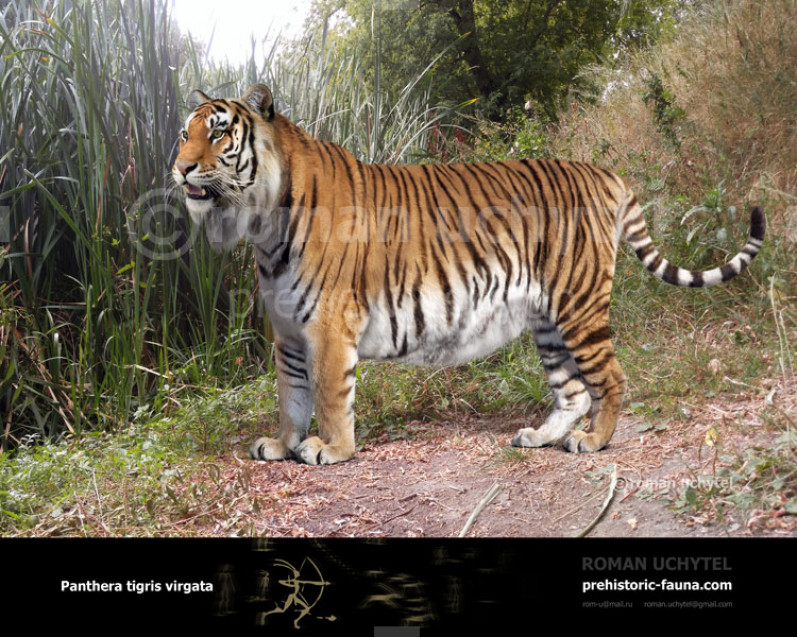
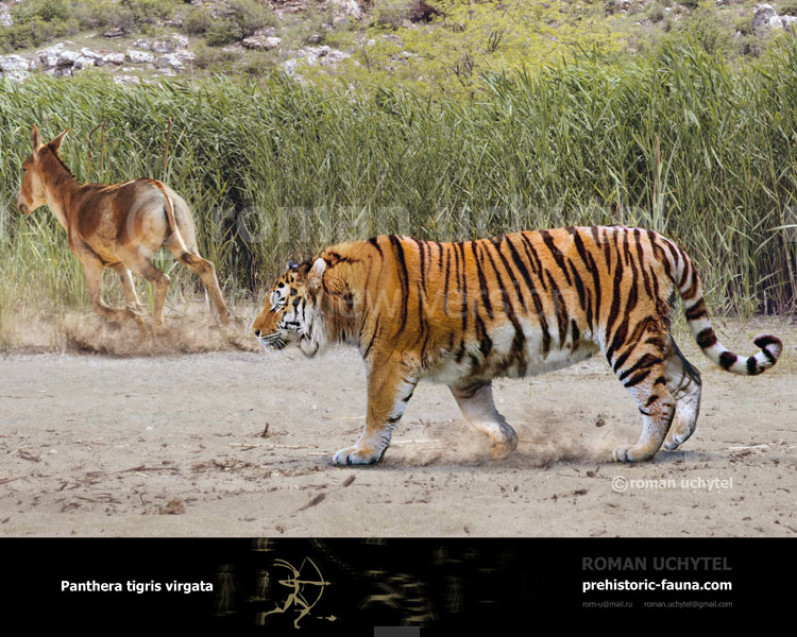
-797x638.jpg)
1-797x638.jpg)
-797x638.jpg)
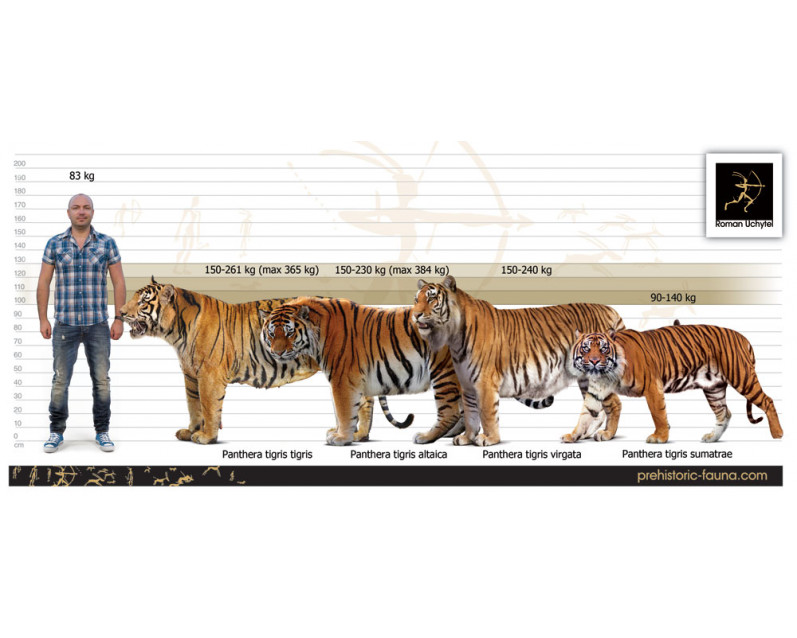


-70x56.jpg)
1-70x56.jpg)
-70x56.jpg)

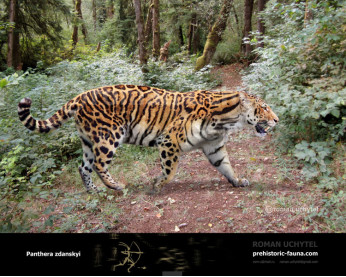
-346x277.jpg)


